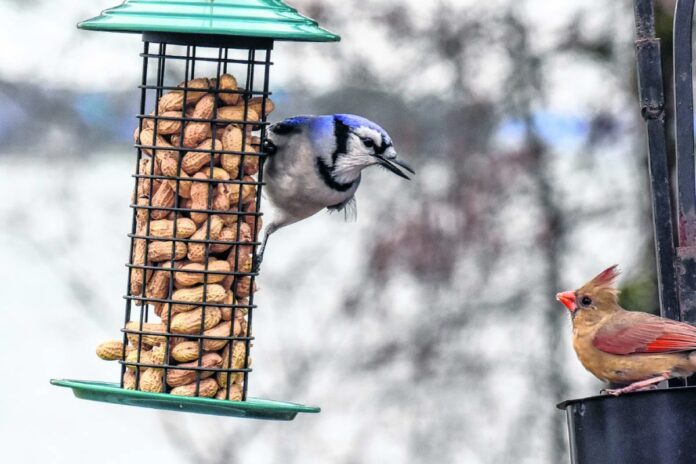
HANCOCK COUNTY — Bird watchers, rejoice: Hancock County residents have been cleared to resume feeding birds after the state asked those in the area to pause in order to combat a mystery disease affecting Indiana songbirds.
The Indiana Department of Natural Resources has removed Hancock County from a list of counties asked not to feed birds to discourage them from congregating and potentially spreading the unidentified illness. Counties where residents are still advised not to feed birds include Allen, Hamilton, Hendricks, Johnson, Lake, Marion, Monroe, Porter and St. Joseph.
“Based on the data, it appears that the bird illness is consistently affecting specific areas. There is no imminent threat to people, the population of specific bird species, or to the overall population of birds in Indiana,” the DNR said in a statement on its website.
Hancock County bird lovers can begin placing bird feeders in their yards again if they are comfortable doing so and unless they spot sick or dead birds in their yard. However, the DNR is still asking residents to take some precautions.
“Seed and suet feeders should be cleaned at least once every two weeks by scrubbing feeders with soap and water, followed by a short soak in a 10% bleach solution to keep birds healthy and limit the spread of disease,” its website says. “Hummingbird feeders should be cleaned at least once a week with a 10% bleach solution and rinsed thoroughly.”
Hancock County Purdue Extension educator Lais McCartney said she hasn’t heard many reports of sick or dying birds in the area, but she has had a lot of phone calls from residents asking when they’ll be able to feed their feathered friends again. She was glad to be able to give local birders the news that they could resume.
“They’re really excited about it,” McCartney said.
The DNR first received reports of the bird disease from Monroe County in May. By the summer, it asked residents all around Indiana to pause in feeding birds.
The DNR also asked Hoosiers to report sightings of sick or dead birds, and more than 3,400 reports were submitted. Of those, more than 500 cases in 72 counties were confirmed to be possible instances of the mystery disease involving its specific symptoms — crusty eyes, eye discharge and neurological issues like visible confusion.
Indiana Animal Disease Diagnostic Laboratory analyzed samples of tissue that ruled out common bird diseases like avian influenza, West Nile virus, salmonella and others. So far, the cause and transmission mechanism of the disease is still unknown.
Bird species known to have been impacted by the disease include many that visit backyards: American robin, blue jay, brown-headed cowbird, common grackle, European starling, various species of sparrows and finches, and northern cardinal.
Avian disease experts at the U.S. Geological Survey’s National Wildlife Health Center are still working on determining the cause of the disease, and Indiana will provide samples to their efforts.
Sightings of sick or dead birds can be reported online at www.in.gov/dnr/fish-and-wildlife.
